Quite a few WiFi 7 access points have already entered the market and after testing a few of them, it’s quite clear that it’s way too early to make the switch to the newer standard. So, if you want to upgrade your wireless hardware, the WiFi 6 access points remain the best option from the cost to performance perspective. Why not WiFi 6E? Listen, the extra 6GHz radio band will be an excellent addition in the future, but can’t really say that compatible clients are widespread.
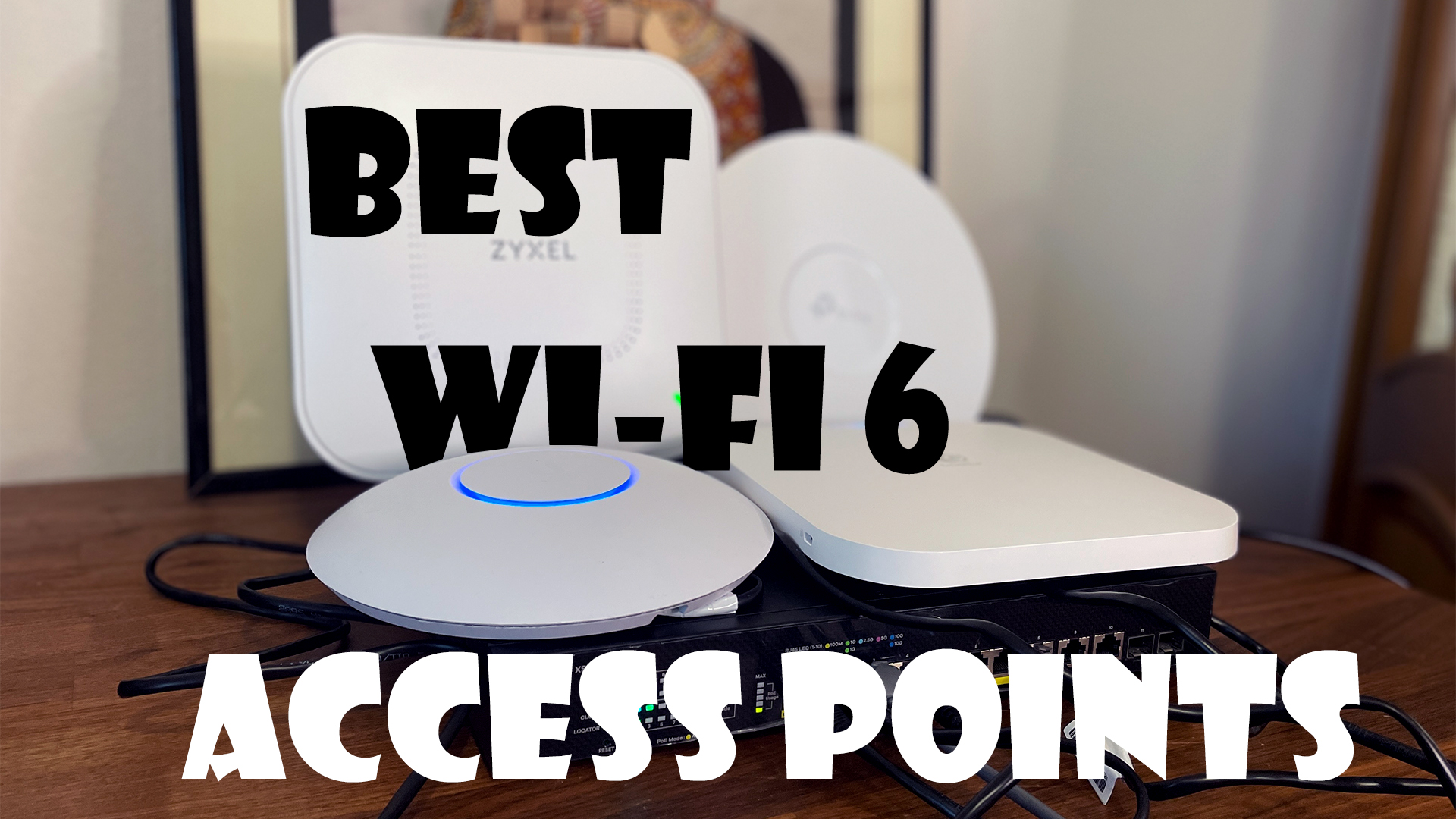
Sure, there’s a VR headset here, some phone there, but unfortunately, the WiFi 6E is most likely going to be a sort of lost standard. At the moment, there are no WiFi 6 access point tests on this channel, but I did review quite a few of them over the years and I also re-tested what I considered to be the best among them specifically for this article.
These new tests focus on the multi-client performance with the latest firmware update and I limited the selection to four devices, some suitable for specific scenarios. One access point may excel at providing a higher throughput, while another will offer the best security features. Also, I know that there may be better devices out there, but I will limit myself to what I personally tested. This is not some soulless listicle. That being said, I chose the TP-Link EAP670, the EnGenius ECW230S, the Zyzel WAX650S and the Ubiquiti U6 Pro.
Let’s first talk about the design of the access points and the heat management
The best looking access point from the bunch is most likely the Ubiquiti U6 Pro due to its compact circular case with the ring LED at the top, but the ECW230S is definitely a close second, also sporting a fairly narrow case. The Zyxel WAX650S and the TP-Link EAP670 are very large access points and they will hardly blend in with the ceiling.
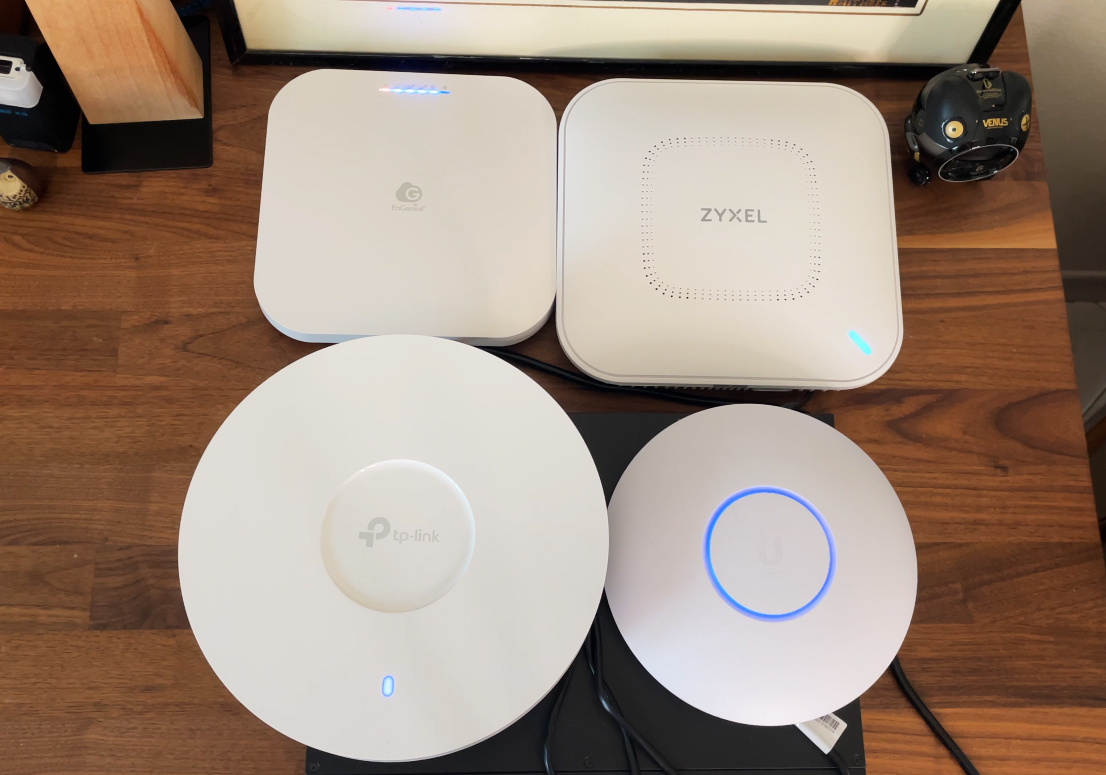
And, as for the mounting options, all can be mounted on the ceiling using dedicated brackets, but only the TP-Link access point and the U6 Pro will allow the cable to sit comfortably while the devices are mounted on the wall. In terms of ports selection, the most bold device is the Zyxel WAX650S which has two ports, one 5GbE and the other simple Gigabit, while two other three devices have one 2.5GbE port only and the U6 Pro has a Gigabit port. But there is an important aspect that needs to be discussed and it’s the power consumption.
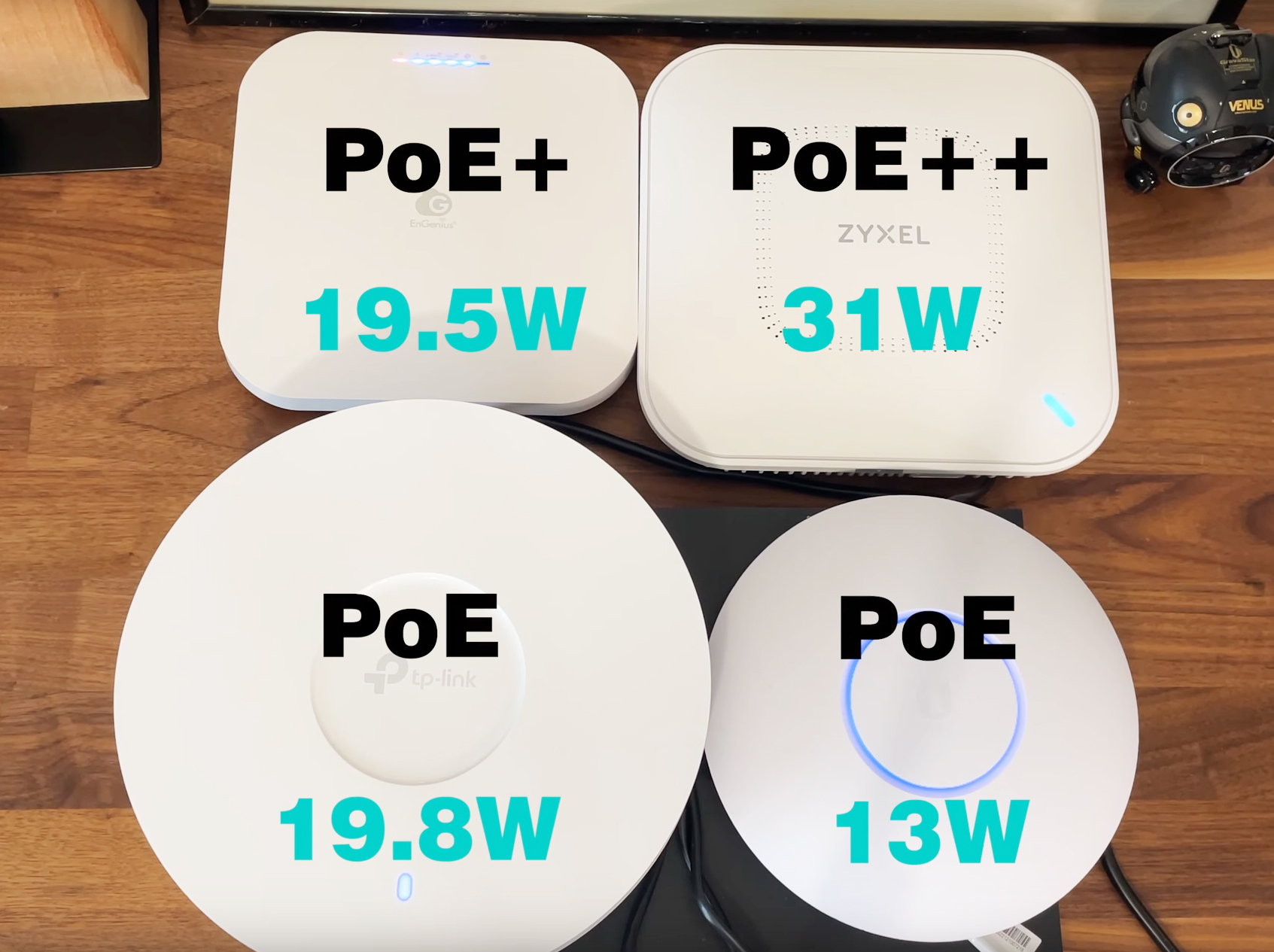
To be able to reach its full potential, the Zyxel WAX650S needs a PoE++ network switch and it will draw 31W which is above the 19.5W of the EnGenius ECW230S, the 13W requirement of the Ubiquiti U6 Pro and the 20W needed to power up the TP-Link EAP670.
If you’re a fan of Zyxel, but think that the WAX650S is too much, there is a lighter version called the WAX630S. I also need to mention that the U6 Pro can only be powered up using PoE, so you will need an extra switch or PoE adapter, while the other three devices can be connected to a power outlet.
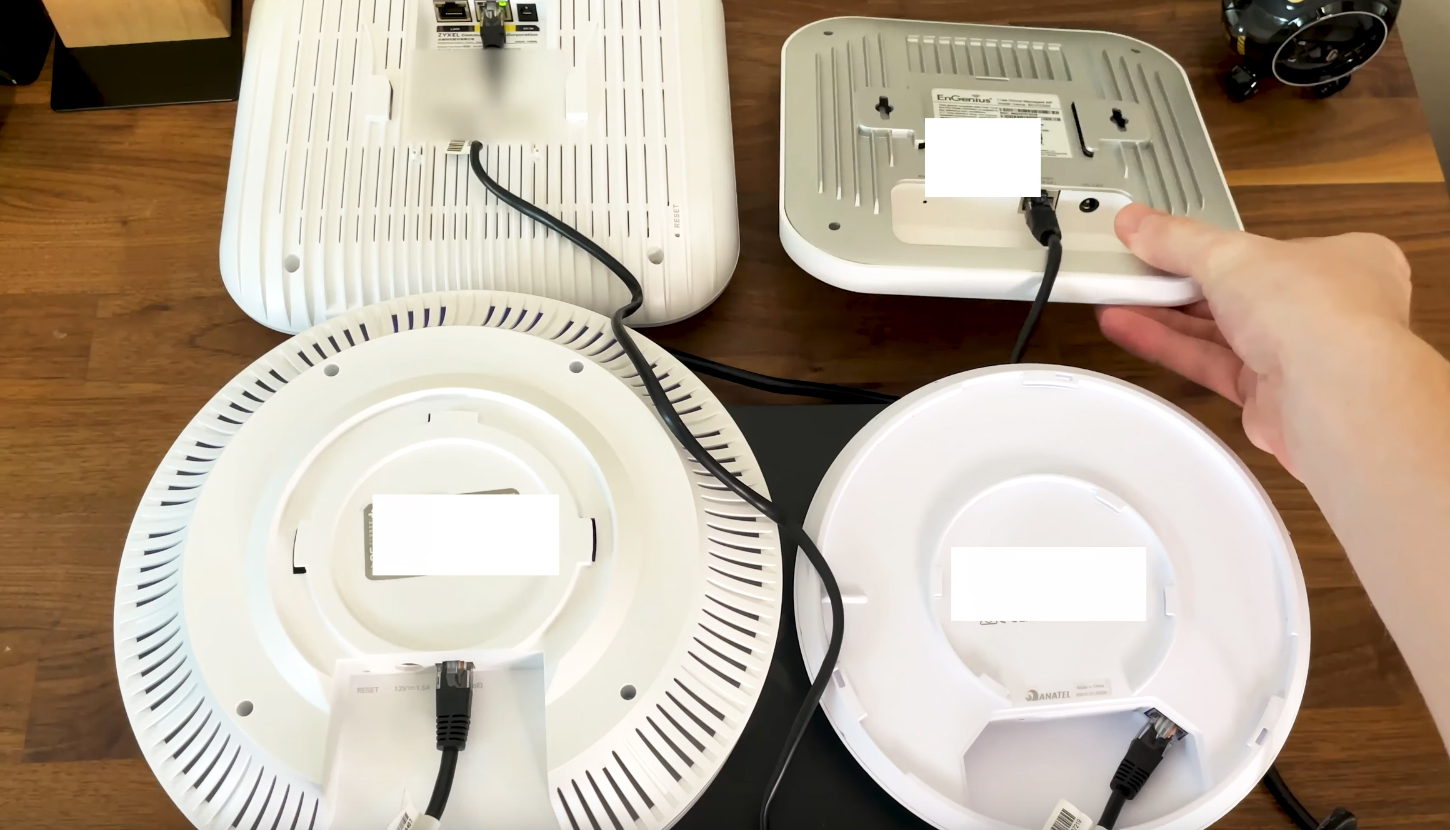
Now let’s talk about the heat management. All four access points rely on passive cooling, yes, even the U6 Pro and as expected, the two larger devices, the EAP670 and the WAX650S performed better than the other two access points. The U7 Pro was a bit warmer than the aforementioned two devices, while the EnGenius ECW230S managed to get hot to the touch.
So yes, the slim case does come at a cost. It’s curious that the newer ECW536 WiFi 7 access point seems to be better at managing the inner temperature.
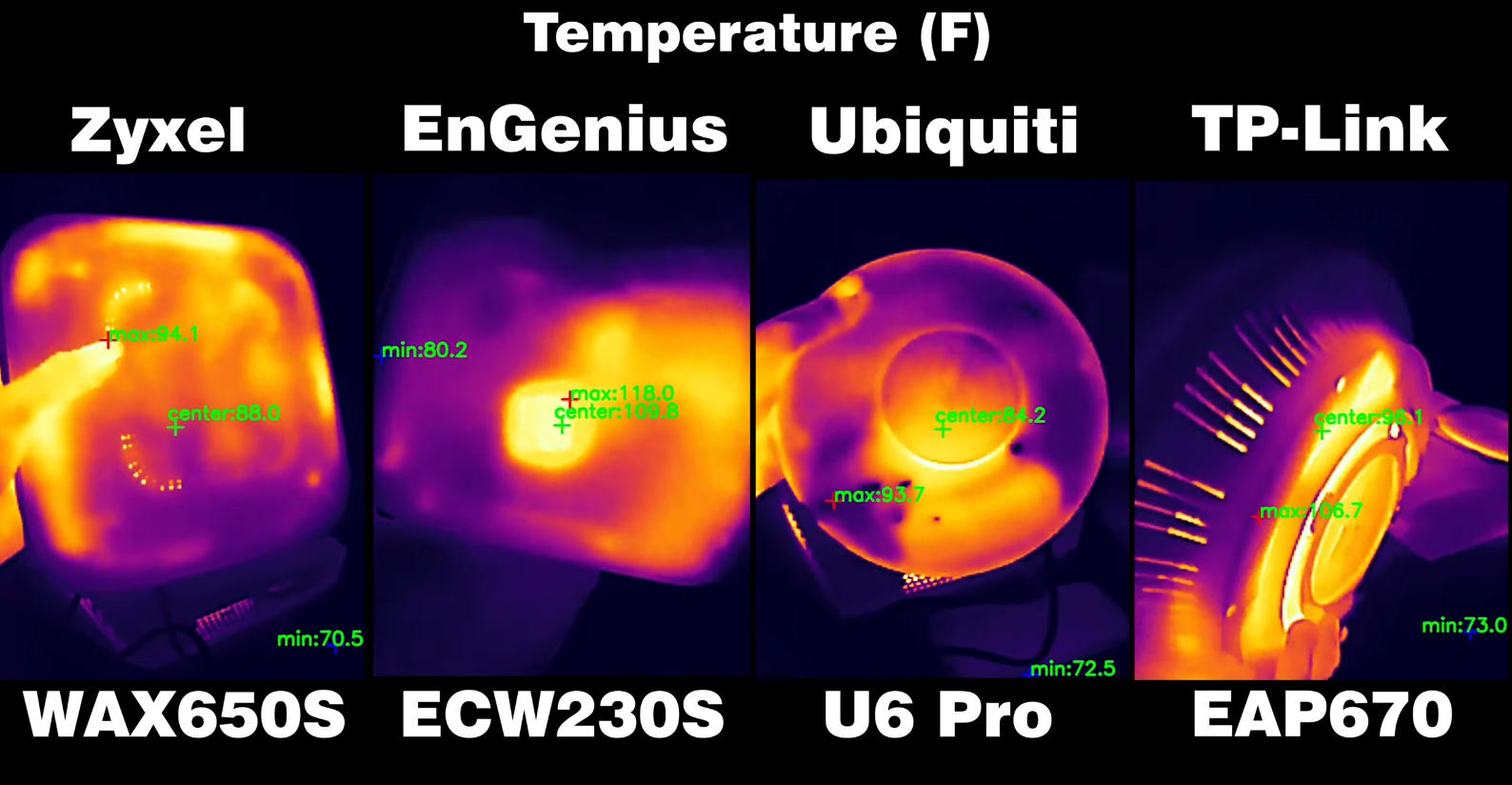
In terms of design, I suppose that the U6 Pro is overall better, because for the other access points, there is always a tradeoff that minimizes their advantage.
Which is the better equipped access points?
I opened up all of these access points and yes, the Ubiquiti U6 Pro was the most difficult to open, but what’s important right now is which one has the best components. The Zyxel WAX650S and the EnGenius ECW230S share the same processor, and the same can also be said about the other two access points which also have the same processor, but the former is a bit better than the latter.
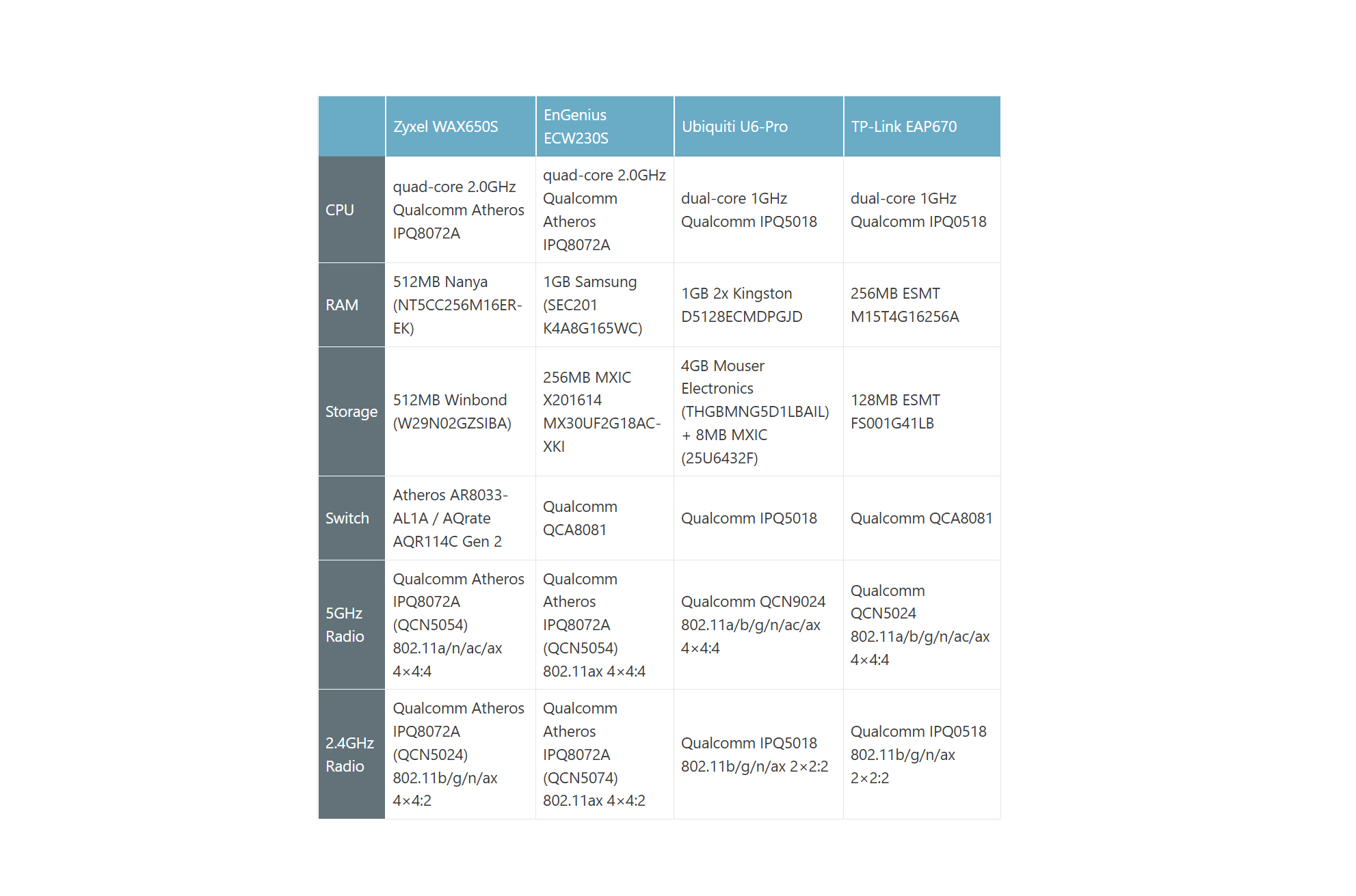
As for RAM and the MIMO configuration, the ECW230S seems to be the best equipped one, which makes sense considering the extra security features that it offer and it’s immediately followed by the Zyxel WAX650S. But let’s move forward to the test and see which one offers the best throughput.
Which access point with the best throughput
After running a few single-client tests using a WiFi 6 client device equipped with an Intel AX200 adapter, we can see that the Zyxel WAX650S offers the best throughput when using the 160MHz channel bandwidth, getting above the Gigabit limit.
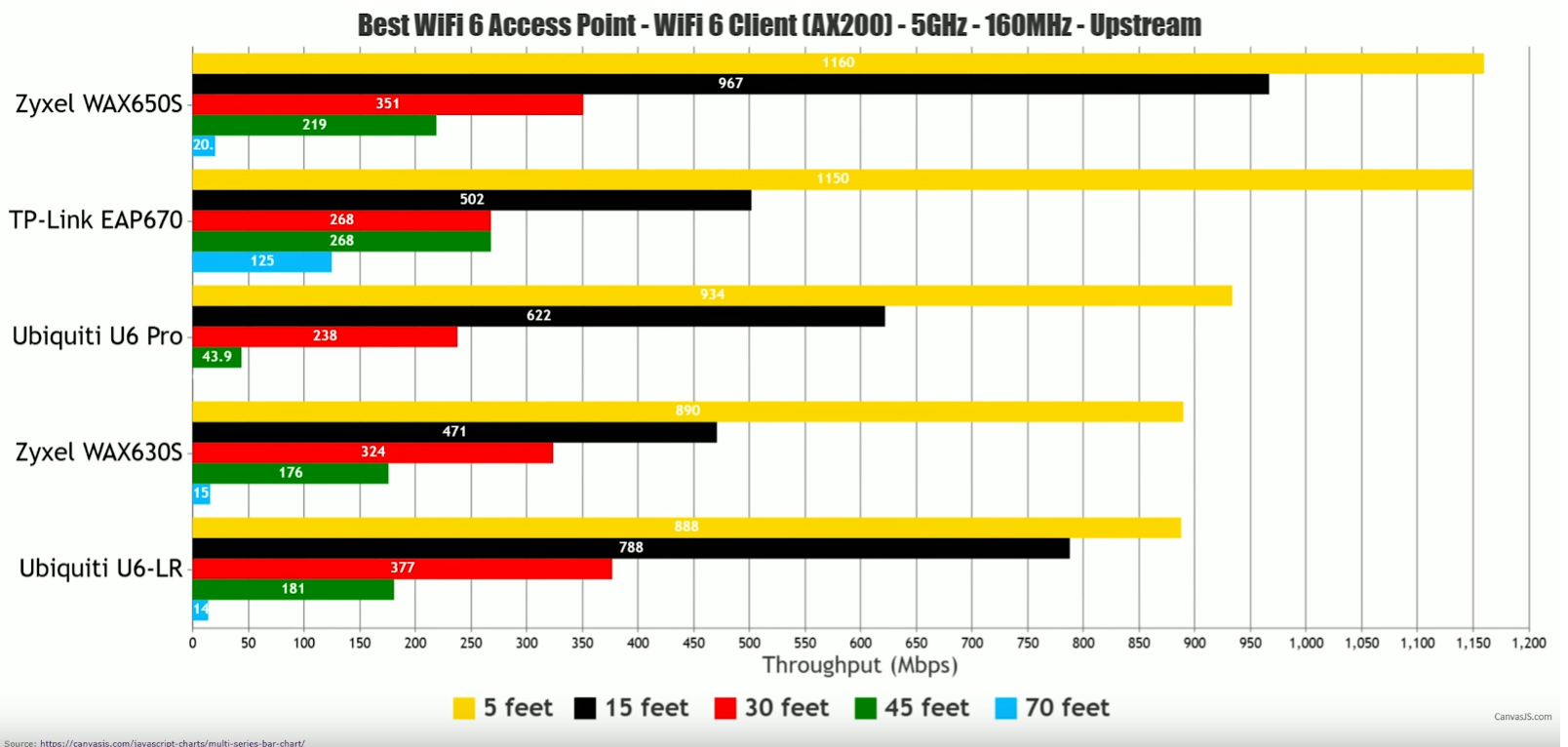
The second place is taken by the TP-Link EAP670 and I have also added more access points to the list to get an idea about how other devices perform. You will see that the ECW230S is missing from this graphic and it’s because it does not support the 160MHz channel bandwidth.

Is it a deal breaker? Not really unless you have a very clean, interference-free environment, but it is less equipped than some other access points from this list. Switching to the 80MHz channel bandwidth, we see that the TP-Link EAP670 gets to the top and it’s followed by the WAX650S. The EnGenius ECW230S and the U6 Pro are a bit less impressive here.

All this was upstream, but some of you may also need to upload stuff to the Internet, so how’s the downstream performance? Using the 160MHz channel width, the Zyxel WAX650S takes the lead and surprisingly, it’s only closely followed by the WAX630S.

The TP-Link EAP670 may have been impressive upstream, but downstream it did lose quite a bit of momentum. Using the 80MHz channel bandwidth, we see that the WAX650S is still the best performer, significantly outclassing pretty much all other WiFi 6 access points that I tested so far.
Which access point has the best range?
Let’s now talk about range. I could simply check out which access point had the best throughput at 70 feet in my house, but since each home layout is different and the interference is also unique to each location, it’s far wiser to take into account the signal attenuation. This way, you can also reproduce these results at home. It also helps us see which access point offers the best throughput when the attenuation is at or more than 80dB.
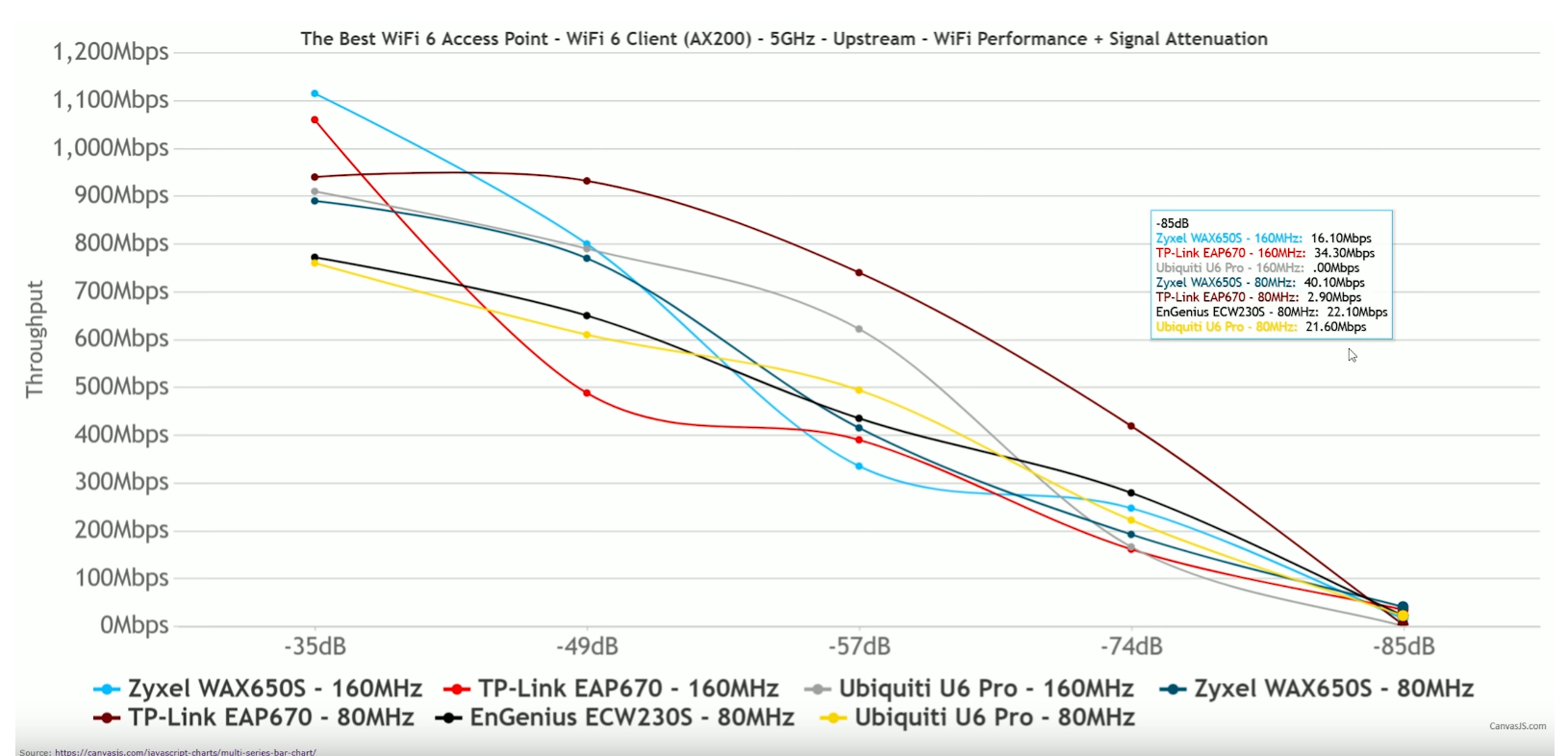
I didn’t add too many devices since the graph would be unreadable, but we get an idea about which access point offers a usable throughput upstream when the signal attenuation gets near and beyond 80dB. When using the 160MHz channel width, we see that the winner is the TP-Link EAP670 followed by the Zyxel WAX650S. When using the 80MHz width, the EAP670 falls to the last place, the Zyxel WAX650S being the best out of the bunch, followed by the ECW230S and the U6 Pro, both offering a usable throughput.
I know you may ask why didn’t I add the U6 LR? Surely it must have a better range than the U6 Pro, right?
I tested these two devices in the EU, which means that the gain was much more limited than in the US. Perhaps it’s better than the U6 Pro, but I couldn’t see a major difference.
Which WiFi 6 access point is the best in regards to the 2.4GHz radio band?
I won’t focus as much on the 2.4GHz band performance, but it’s still very important for smart and general IoT devices.
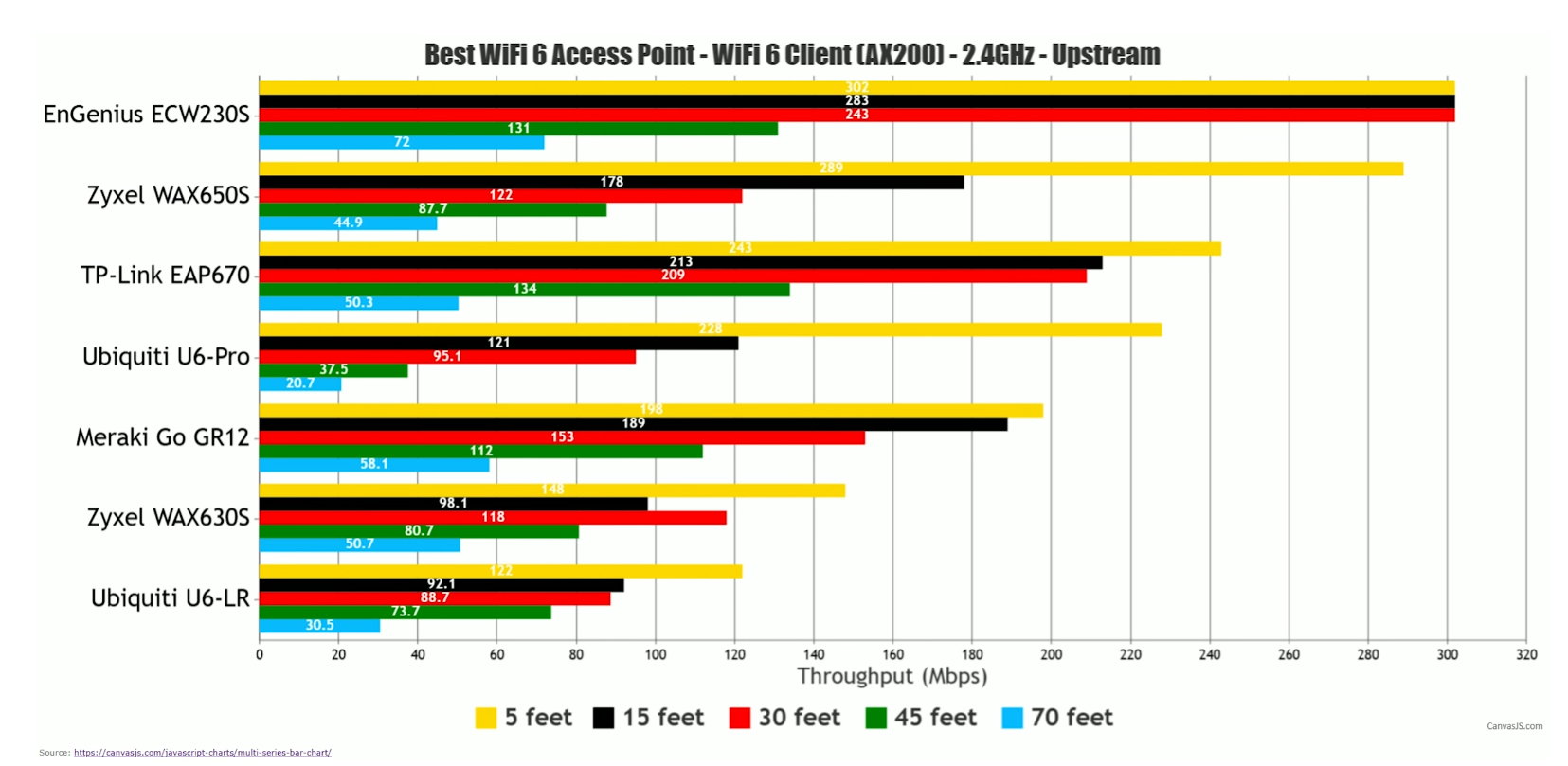
And surprisingly, the EnGenius ECW230S does take the lead, offering a very good throughput up to the 45 feet point. Now let’s talk about range because it’s far more important on the 2.4GHz radio band and talk about an unexpected turn of events. Pretty much all the access points from the bottom of the previous graph offer a better throughput than the top four when the signal attenuation gets close to -80dB. This means that these will continue to offer a better connection a lot farther.
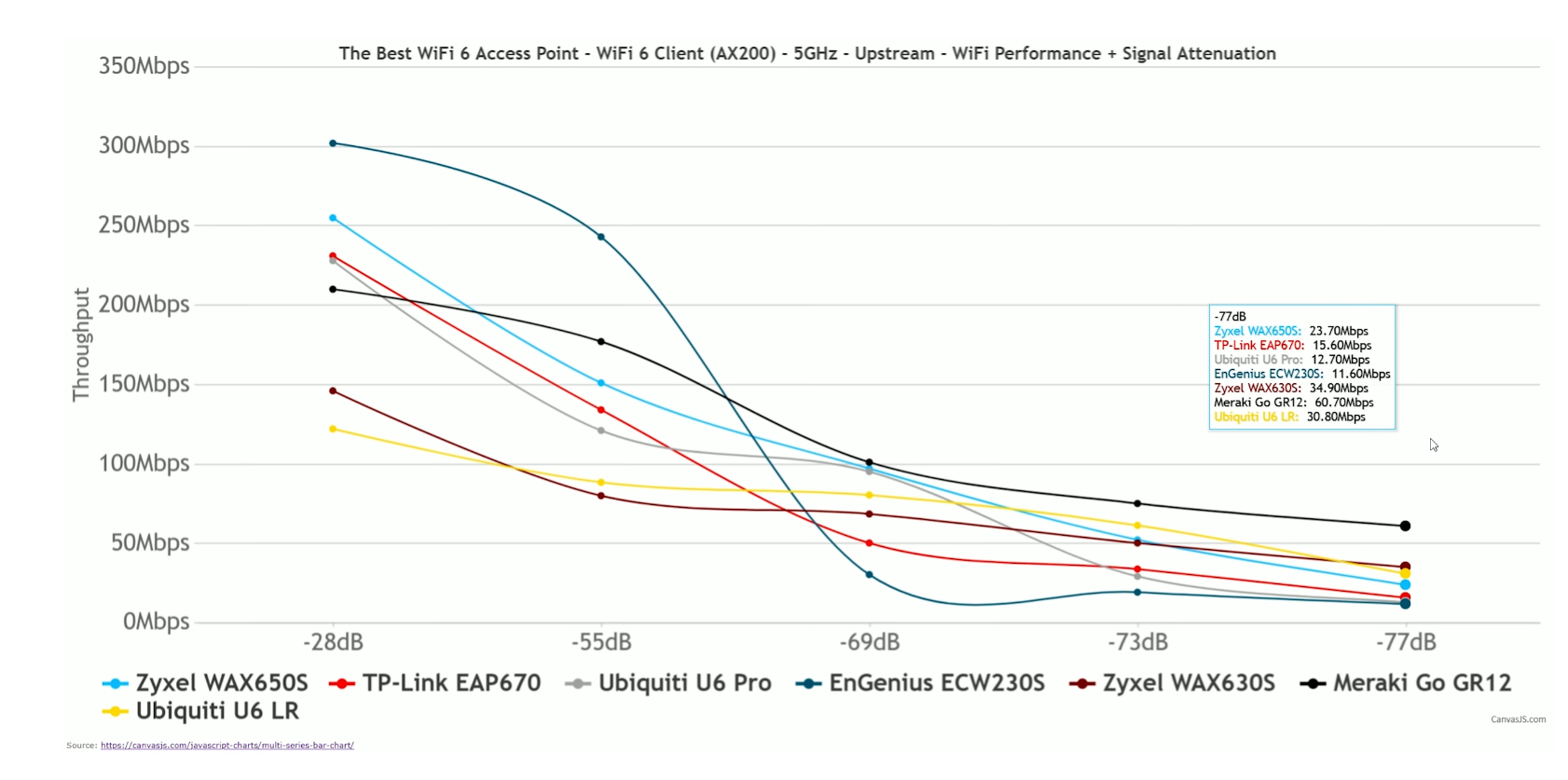
Which access point has the best latency (multi-client tests)
If you’re not familiar with how I conduct the multi-client tests, I show them far more in-depth in pretty much every other access point or router review, so do check them out as well. In essence, I get five client devices and run various types of traffic. The open-source tools from under net-hydra then show the latency detected at each client level. So, let’s see how well the access points handled simultaneous 1080p streaming on 5 client devices.
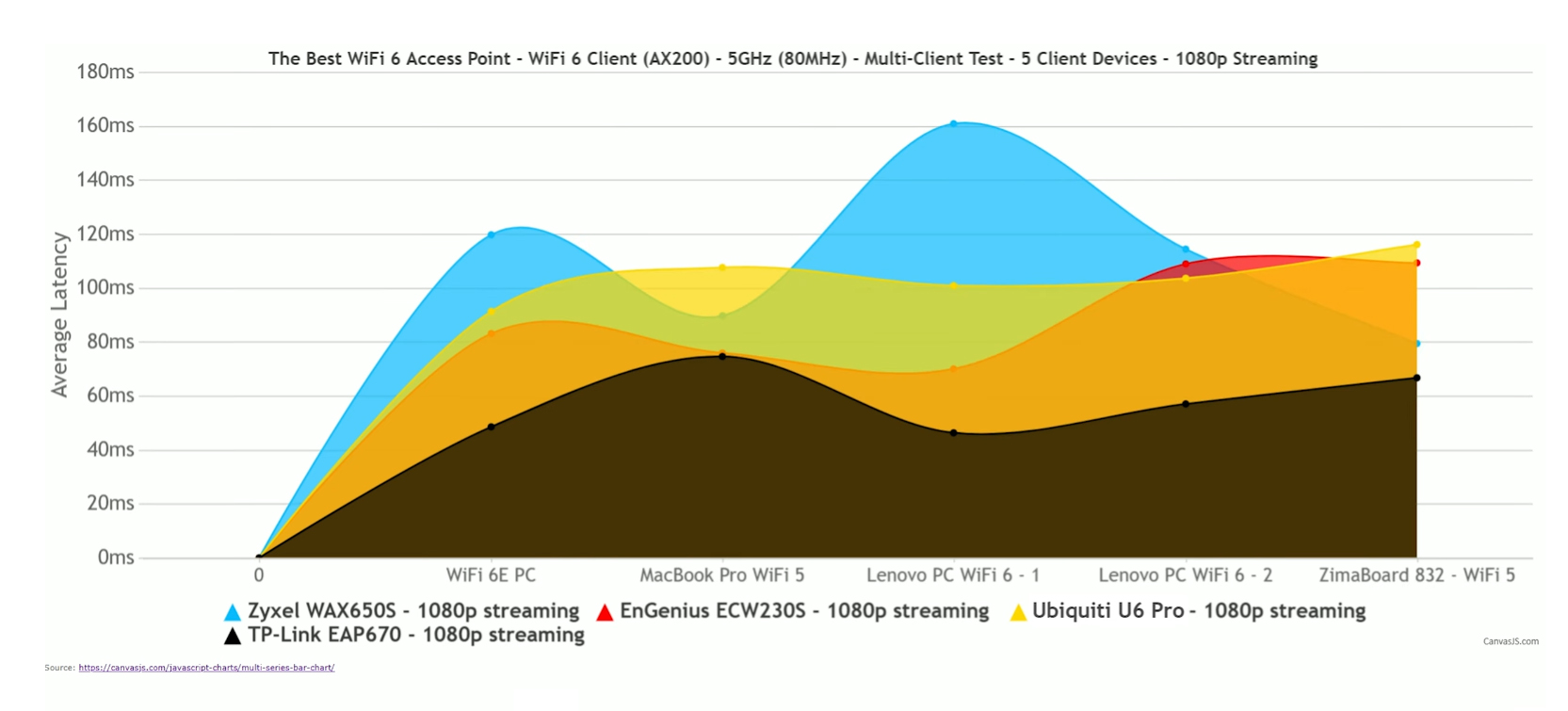
I couldn’t add all the values that I got since it would be a mess of a graphic, so I only included the median latency. Do let me know if you want to see the full latency graphics for any of these access points since I have them prepared in their folder. Anyway, we can see that the TP-Link EAP670 is the clear winner, staying very close to 50ms on the WiFi 6 and 6E clients, with a slight rise near 80ms with the two WiFi 5 clients.
A close second is the EnGenius ECW230S which manages to stay near 70ms with three clients, but does go above 100ms for the other two. Not really ideal since the user will experience buffering and we’re not yet in the 4k realm. The other two access points did not perform very well, so I suppose it’s wise to limit the amount of client devices that need to stream 1080pm footage at the same time to lower than 5.
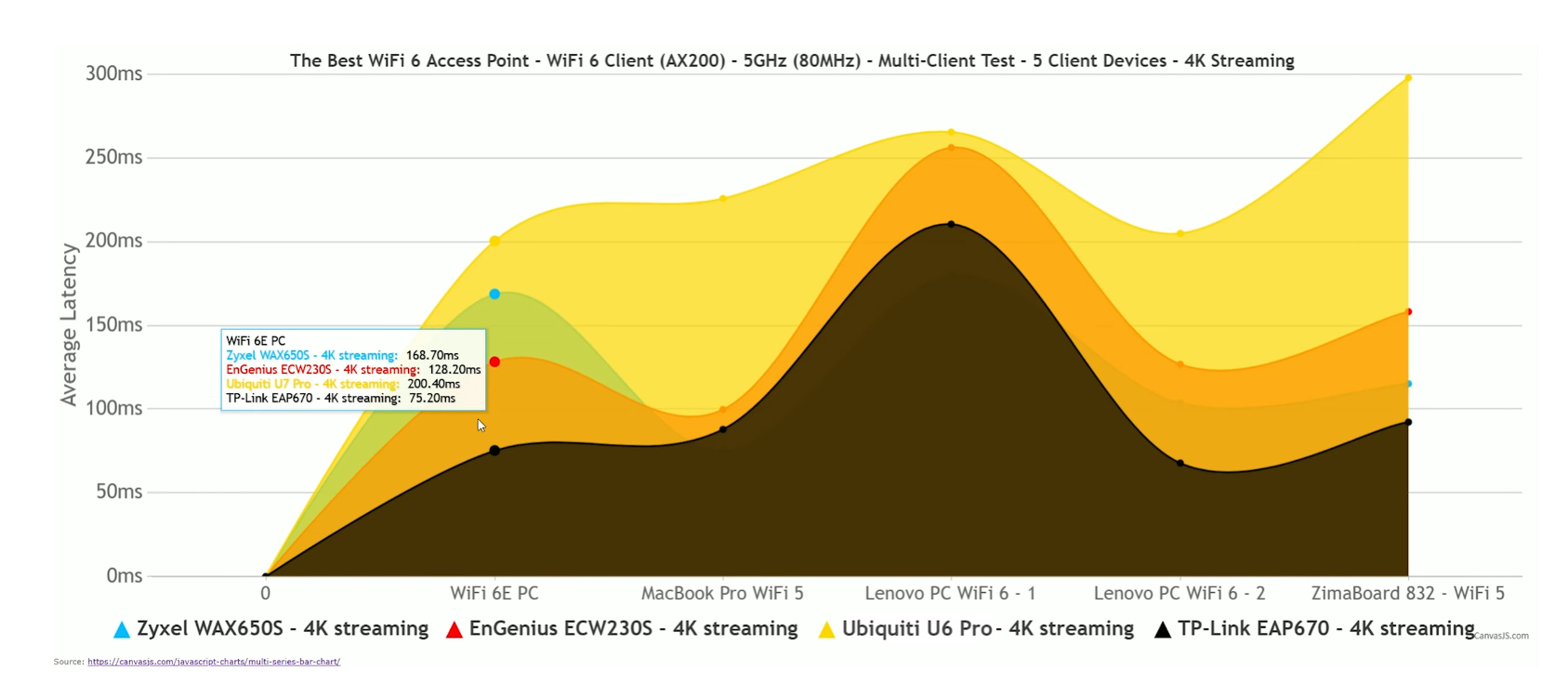
Moving forward, I simulated 4K streaming on the 5 client devices and again, the TP-Link EAP670 doesn’t disappoint, although one client did rise way above reasonable latency levels. The worse offender is the Ubiquiti U6 Pro which offers an unusable performance on all 5 client devices, while the other two access points struggle to stay within the 100ms limit.
Again, be aware that this is the mean latency and doesn’t paint the full picture. Now let’s see how well these four access points handled simultaneous downloading traffic.
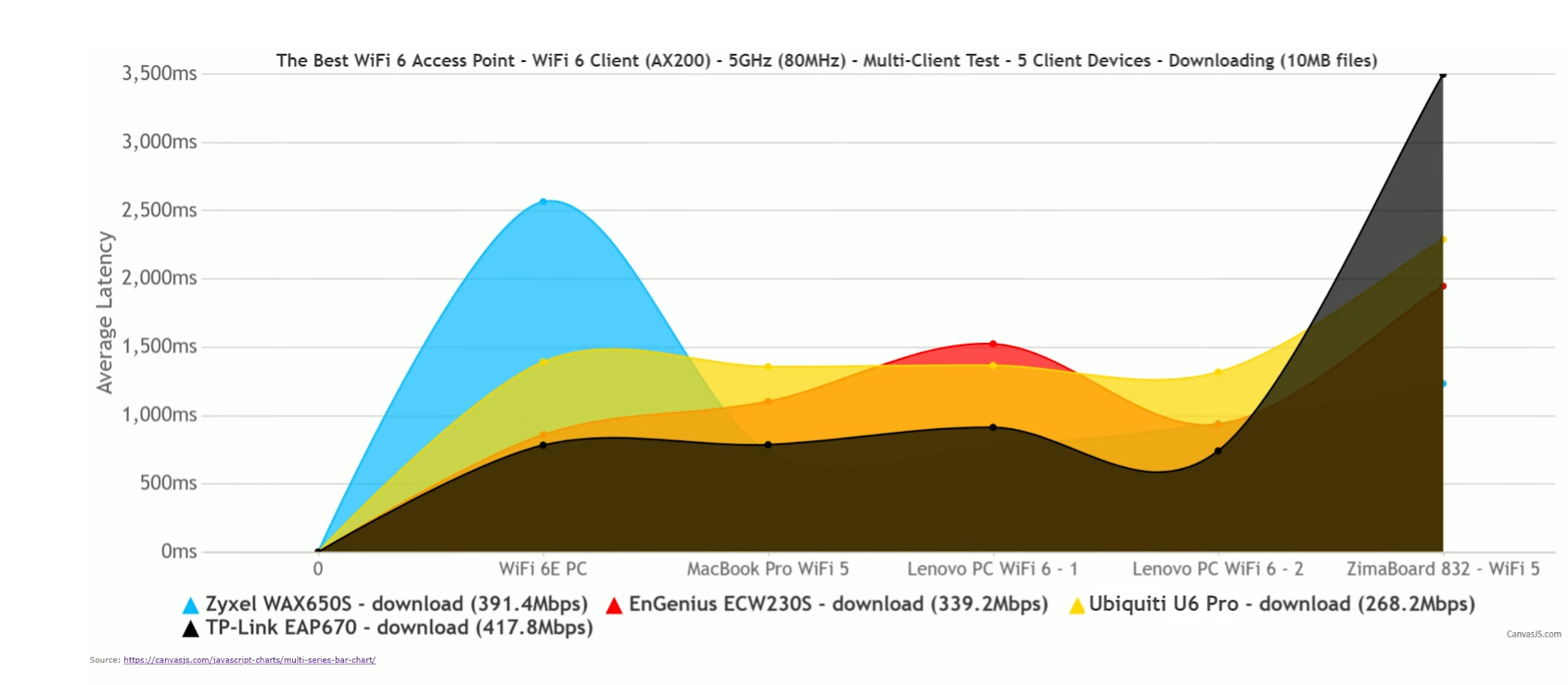
It’s worth mentioning that unlike the previous two type of traffic, there is no throughput cap here, so each client can draw out however much it can. And you can see the total throughput for each device written near the labels. None of these values are anything I would call decent or passable, but at least we can see which access point better handles the simultaneous downloading of a 10MB file on 5 clients.
The TP-Link EAP670 is again the winner, but it also let loose on one client devices, reaching a latency close to 3.5s on the poor ZimaBoard 832. The Zyxel WAX650S was very close to the EAP670 and it kept the latency lower on four clients, but went very high on the other WiFi 5 device, the MacBook Pro. But let’s move forward and see how the access points handle a mix of traffic.
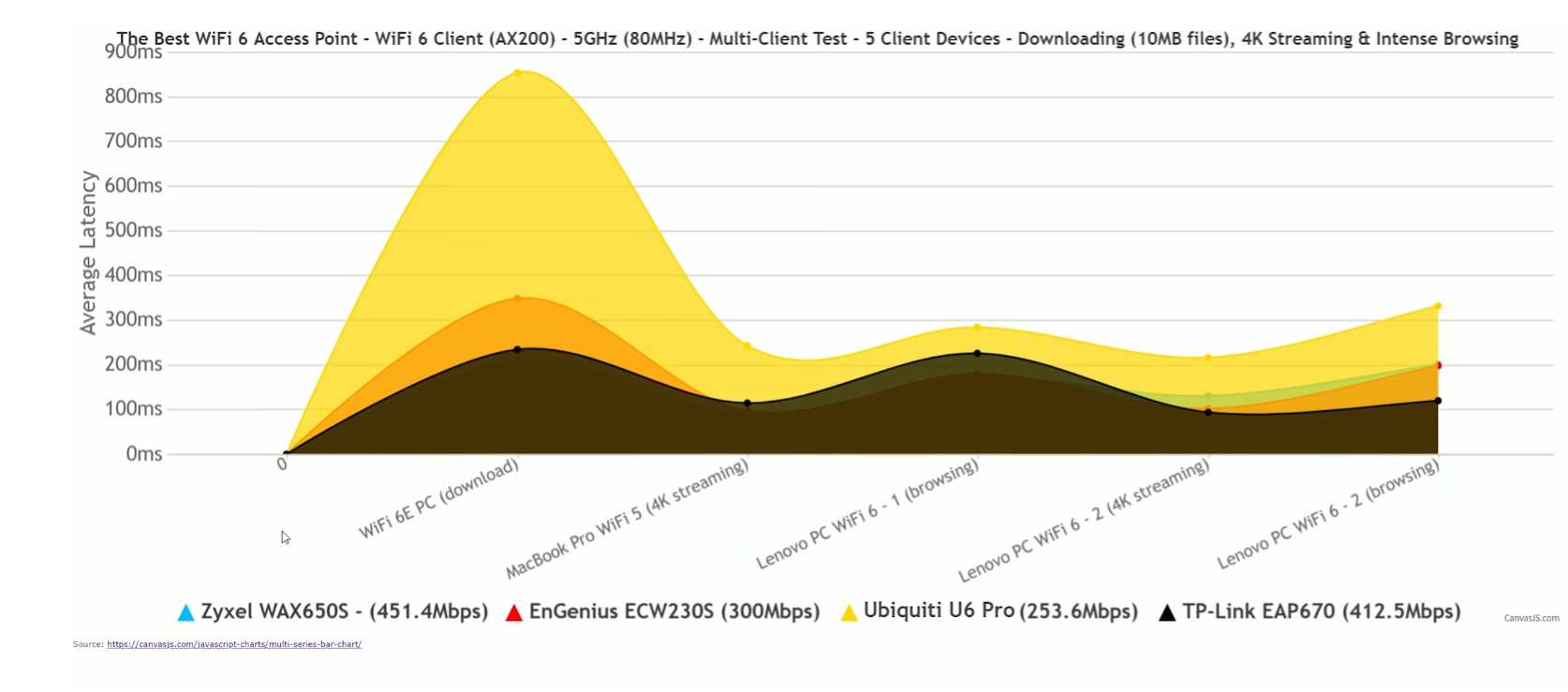
We’re going to start with one downloading client, two 4K streaming devices and two intense browsing clients. And these are the results. Unfortunately, we can take the Ubiquiti U6 Pro away since it doesn’t offer a good performance at all here. The intense browsing was handled well by all client devices, yes, including the U6 Pro that I discarded and the 4K streaming performance leaves a lot to desire – it should have been at maximum 50ms.
I would say that overall, it’s a tie between the Zyxel WAX650S and the TP-Link EAP670. Be aware that I also included the total throughput. Moving forward, I limited the number of client to three and ran intense browsing, VoIP traffic and I downloaded 1MB files continuously. And things got overall better.
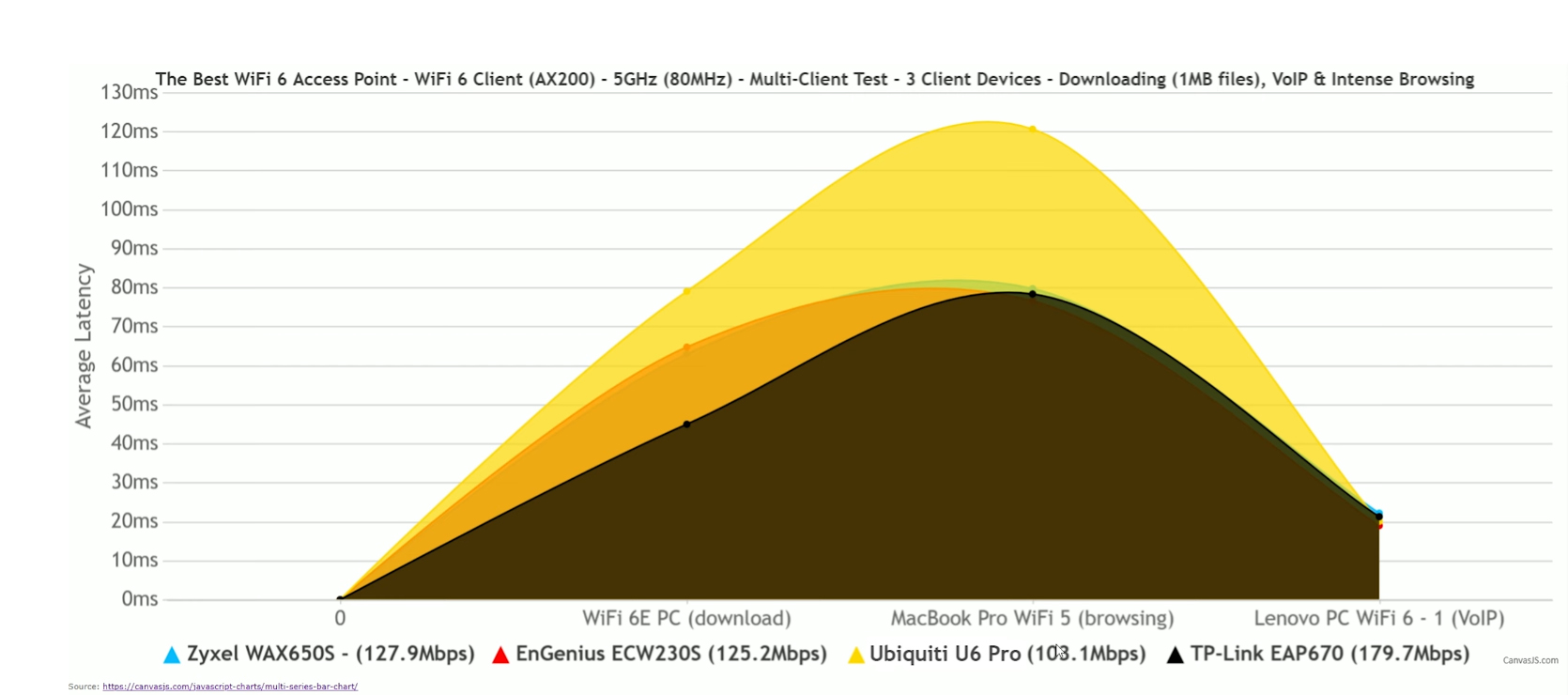
The VoIP latency is very similar across all four access points and the intense browsing remained within the reasonable limits as well. As for the downloading latency, we see that the TP-Link EAP670 handled it the best, although I suppose the other access point also did decently well.
Which access point has the best software?
Let’s first see if we get the option to configure and monitor these access points in standalone mode since most have already migrated towards Cloud management. The Zyxel WAX650S doesn’t really have a very comprehensive local management platform, while the EnGenius ECW230S offers very little configuration options.

So you have to rely on the manufacturer’s servers all the time. The TP-Link EAP670 and the Ubiquiti U6 Pro both offer a similar approach. You can run the Omada SDN and the UniFi instance locally or relying on the manufacturer’s servers. Also, both of these access points have some form of standalone platform, a bit more than the EnGenius device and the Zyxel WAX650S.

In terms of layout and options, the UniFi fells mature and it’s actually the inspiration for the Omada software since TP-Link kind of wants to welcome the UniFi users that got jaded with the present and past behaviors from Ubiquiti. The problem remains the variety of supported devices because Ubiquiti offers so many options, while TP-Link is still catching up.
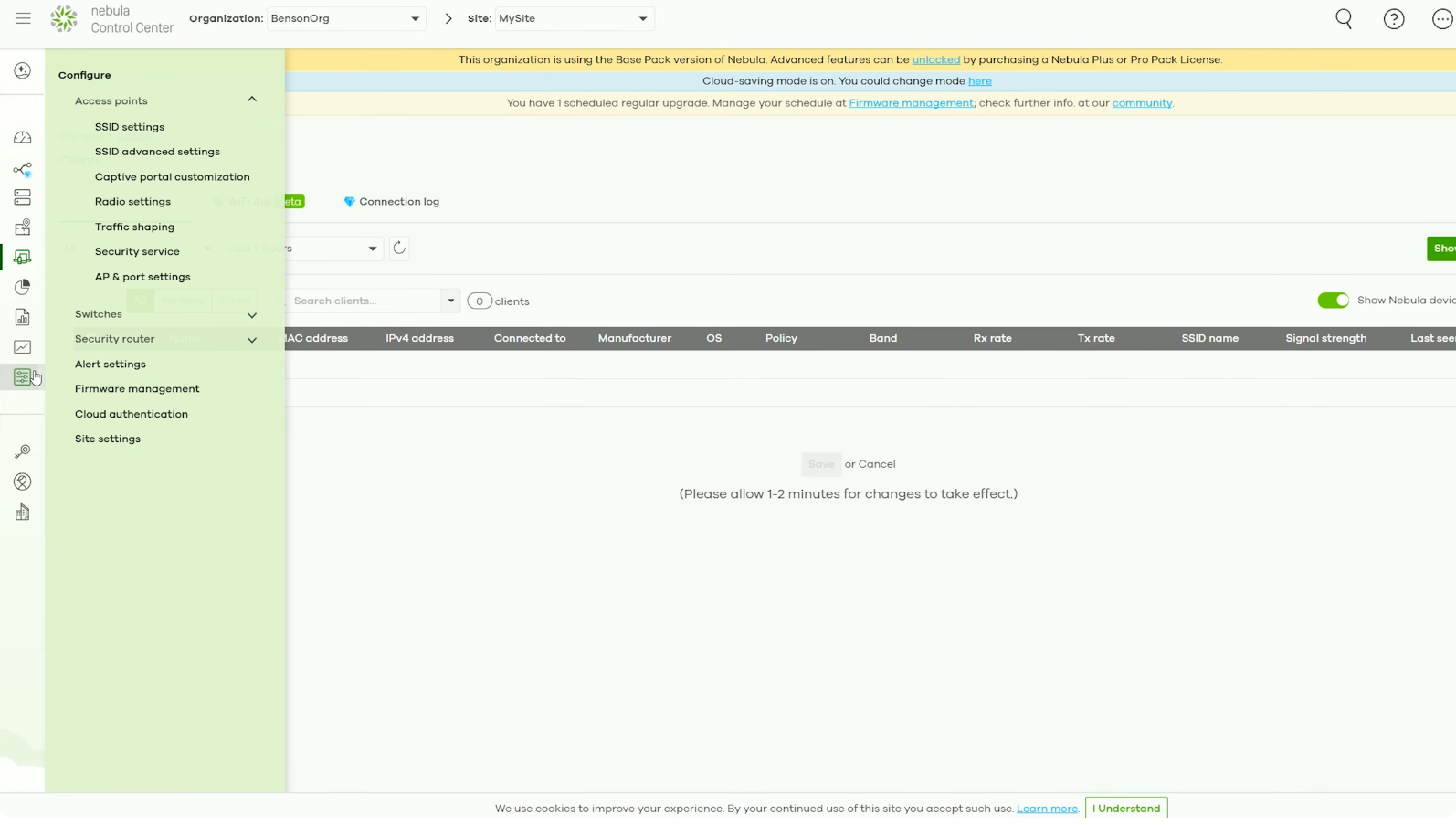
As for the Zyxel, it’s essentially an enterprise-level access point and you do get access to a lot of settings and features. But the interface can feel a bit hard to navigate at times and some advanced features are locked by a subscription. The EnGenius ECW230S Cloud management platform is also feature-rich and yes, some of the advanced settings are also locked behind subscription, especially the high-end security options. And we do know that the ECW230S does have a dedicated radio for checking out for any targeted RF jamming, so a few of these security feature are pretty much mandatory, otherwise, the ECW230 would suffice.
Which is the best in terms of security?
I think that the EnGenius ECW230S is the best WiFi 6 access point in terms of security. It offers the aforementioned RF jamming detection and there’s also Evil Twin attack and malicious attack detection.
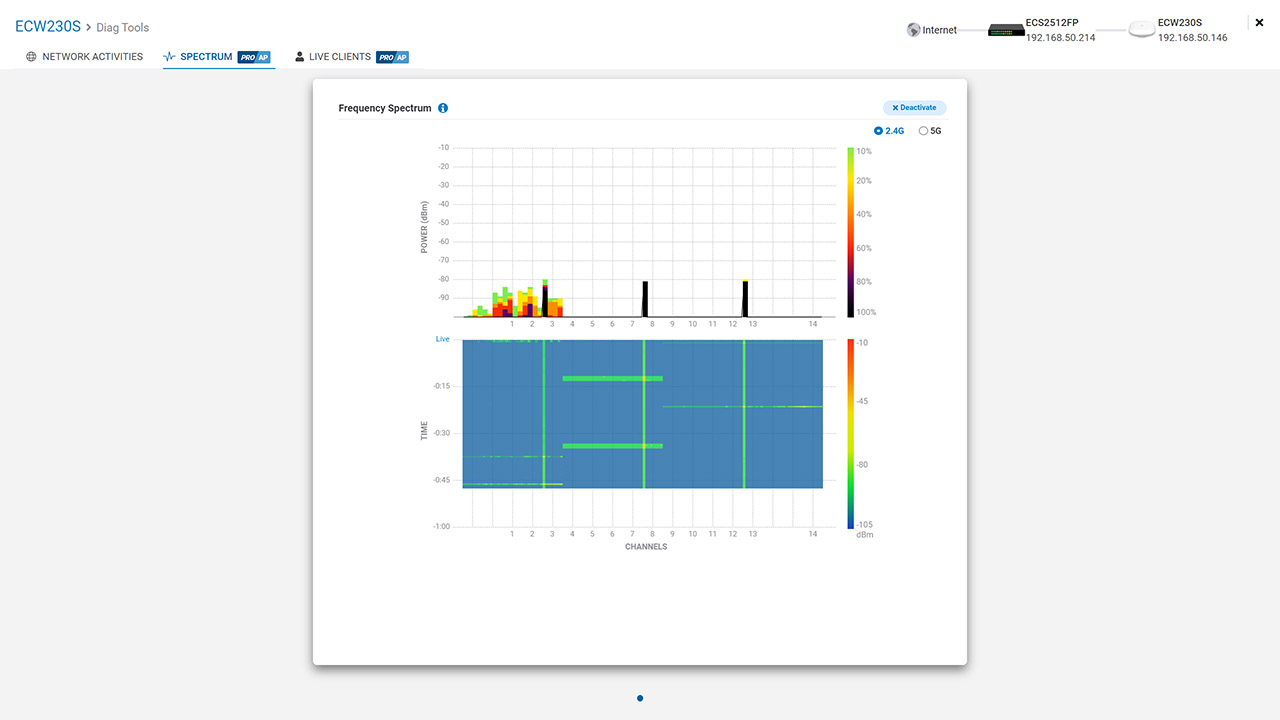
It’s actually really good at identifying rogue access points and those that rely on the Impersonation technique. Additionally, there is also a means to help the sys admins to quickly understand and correct any issue with a remote network, which is a huge plus that I have not seen on other devices, not at this level anyway. The Zyxel WAX650S also has the Collaborative Detection and Response which has the role of detecting and quarantine infected devices. It’s a system that relies on anti-malware, URL threat filter and an IDP.
The Conclusion
So that’s about all for now. We get the Ubiquiti U6 Pro as the best designed access point and its UniFi being really good for all kind of users, advanced and novices alike. The EnGenius ECW230S has the most advanced security features and it also have a very slim case. The Zyxel WAX650S mostly dominates the single-client tests, with the TP-Link EAP670 being a very close rival. As for the multi-client tests, the EAP670 was the clear winner. If you liked this type of content, let me know and I will update it in the future and may release one covering the WiFi 7 access points as well. Don’t forget to subscribe and like. Thank you for watching and see you next time.
